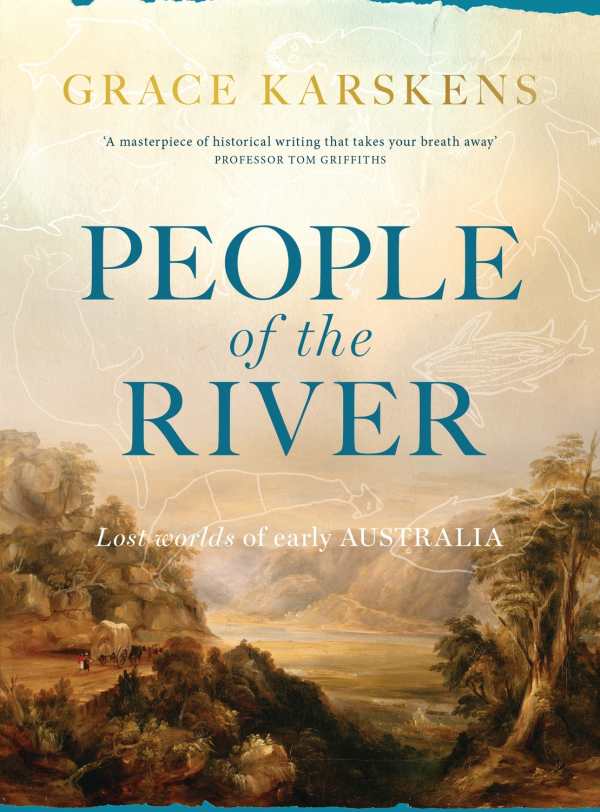People of the River
Lost Worlds of Early Australia
Grace Karskens’s engrossing history People of the River illuminates Australia’s distant past.
The book opens in deep history, describing the topography and course of the Hawkesbury-Nepean River, a waterway that curves like a giant parenthesis around western Sydney, and around which Aboriginal people settled 50,000 years ago.
The book introduces Aboriginal groups first, so that their bond to their ancestral lands is palpable. This also sets the stage for conflicts to come—as do chapters like “Forests and Clearings,” which opens by describing the spiritual and symbolic roles that trees fill in Aboriginal life, turning its benign title into an act dark foreshadowing.
British convicts begin arriving in the region as 1790s, regarded by those who sent them as convenient, if unwilling, immigrants, charged with colonizing a land that was thought uninhabitable in Europe. Aboriginal people and these deported convicts ended up together in the small, rich land embraced by the river’s crescent, and tension mounted as farms pushed against Indigenous lands.
Grand sweeps of drama are expressed in human terms in the book’s focused, swift narration. When other disciplines are brought in, including archaeology and botany, they keep interest strong, showing how complex systems and macro factors affected human lives in the region. As time moves forward, diaries, records, and letters come into play, weaving distinct individuals into the broad canvas of events. The book lets the curtain drop near the end of the nineteenth century, at a time when the Hawkesbury-Nepean area was still recognizable as separate from the lands surrounding it.
People of the River is a meticulous history whose exciting writing reveals the history of the Hawkesbury-Nepean River, the Aboriginal people who settled there, and the English and Irish convicts who arrived and built its farmlands.
Reviewed by
Susan Waggoner
Disclosure: This article is not an endorsement, but a review. The publisher of this book provided free copies of the book to have their book reviewed by a professional reviewer. No fee was paid by the publisher for this review. Foreword Reviews only recommends books that we love. Foreword Magazine, Inc. is disclosing this in accordance with the Federal Trade Commission’s 16 CFR, Part 255.

